Principles underpinning Deep Energy Retrofits (DER) of both homes and non-residential buildings
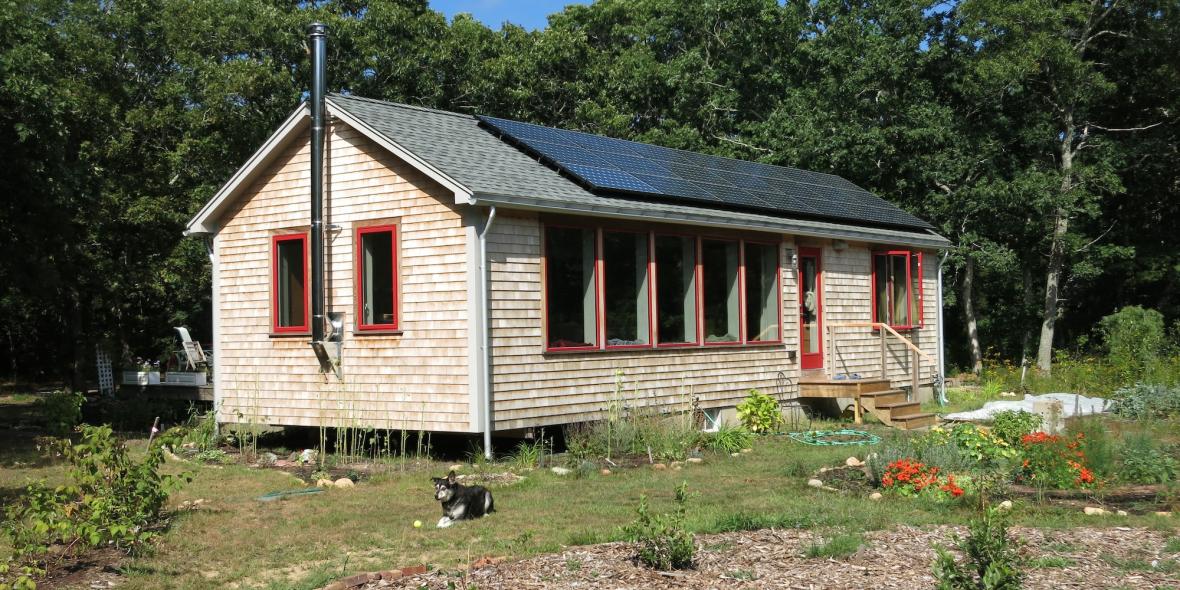
Deep Energy Retrofits (DER) are not just for homes. In fact, many of our most-used public and institutional buildings are in great need of improvements not only to energy and resource efficiency, but comfort, indoor air quality, and durability. In the DER online course being offered in the NESEA Building Energy Masters Series we’ll look at how the same principles underpin the retrofitting task for both homes and non-residential buildings.
The town where I lived for 31 years, Plainfield, NH, experienced the 2008 oil price shock especially hard as an overage in our K-8 school budget. In the fall of 2008 I worked with the volunteer Facilities Committee to develop an approach for the school that would demonstrate profound energy savings and remediation of serious deficiencies at the same time. Our extraordinary results there are completely replicable all across our region.
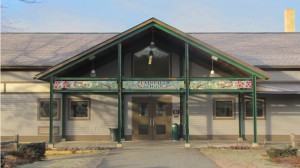 The 35,000 square foot Plainfield Elementary School was built in 1972 and enlarged in 1989 and 2000. The 1972 building is a slab-on-grade single story building with a flat roof. Much of its steel structure effectively bridges the little thermal insulation it has. Due to concerns about structural adequacy to meet current codes, insulation has not been added to the building during re-roofs. The 1989 wing is wood frame construction with pitched roof trusses. It also is slab-on-grade and single level. Significant ice dams prompted an attic level air sealing effort and at that time blown-in cellulose was added. In 2000 the last wing was added, with construction similar to the 1989 wing, although a somewhat more complex design contributes to air leakage issues. The Gym, which was part of the original construction, is un-insulated block with a steel structure above. It is extremely leaky – my blower door was able to depressurize the space to only 13 Pascals, a far cry from the standard testing level of 50 Pascals. A few hours with the blower door and a theatrical fog machine showed a school with varying amounts of air leakage, yet all unacceptably high. The bottom of the wall where it sat on the foundation was a consistent leakage zone.
The 35,000 square foot Plainfield Elementary School was built in 1972 and enlarged in 1989 and 2000. The 1972 building is a slab-on-grade single story building with a flat roof. Much of its steel structure effectively bridges the little thermal insulation it has. Due to concerns about structural adequacy to meet current codes, insulation has not been added to the building during re-roofs. The 1989 wing is wood frame construction with pitched roof trusses. It also is slab-on-grade and single level. Significant ice dams prompted an attic level air sealing effort and at that time blown-in cellulose was added. In 2000 the last wing was added, with construction similar to the 1989 wing, although a somewhat more complex design contributes to air leakage issues. The Gym, which was part of the original construction, is un-insulated block with a steel structure above. It is extremely leaky – my blower door was able to depressurize the space to only 13 Pascals, a far cry from the standard testing level of 50 Pascals. A few hours with the blower door and a theatrical fog machine showed a school with varying amounts of air leakage, yet all unacceptably high. The bottom of the wall where it sat on the foundation was a consistent leakage zone.
Before the Facilities Committee became actively involved, the school was using about 21,000 gallons of fuel oil annually, and 215,000 kWh/year in electricity. The attic repair work in the 1989 wing, some mechanical and control system repairs, and operational and behavioral changes contributed to energy savings of 6,000 gallons of oil and 34,000 kWh annually. These gains cost little and built awareness that significant improvements were possible and desirable.
However, in addition to high energy usage, the Plainfield School suffered from a plethora of other problems. The mechanical systems in the 1972 and 1989 portions of the building were beyond their useful service life and have always functioned poorly while making a racket. A teacher can choose to have ventilation or to be heard in their classroom, but they can’t have both at the same time. The school experienced drafts and wide temperature variations. Some envelope issues resulted in water leakage and subsequent decay and mold. Many windows were in poor condition and functionally inoperable. The T-111 siding near grade warped and delaminated.
The Facilities Committee proposed to the School Board to take one 900 square foot corner classroom in the 1989 wing and disconnect it from the oil-fired heating system, remove the noisy ventilator, and replace these with an air source minisplit heat pump to provide heating (and cooling occasionally) and a residential scale energy recovery ventilator (ERV) to supply fresh air. We proposed a radical insulation upgrade, adding 3 inches of foam insulation to the foundation, 6-1/2 inches of foam insulation to the walls, and replacing the windows with quad-glazed windows that have double the insulating value of typical new windows. The roof insulation had been previously addressed. In the process of this Deep Energy Retrofit (DER), we would also make this room far more airtight, and install new, durable siding on the walls. With the Board’s blessing, we asked the School District voters to approve a warrant article to fund what we called the Prototype Classroom, as a model of what we might achieve across the entire school in years ahead, and as a path to improving the users’ experience while ultimately freeing the Town’s largest asset from the unpredictability of oil prices. In March 2009 the voters approved the expenditure, and during the summer of 2009 the work was done and the Prototype was ready when school re-opened.
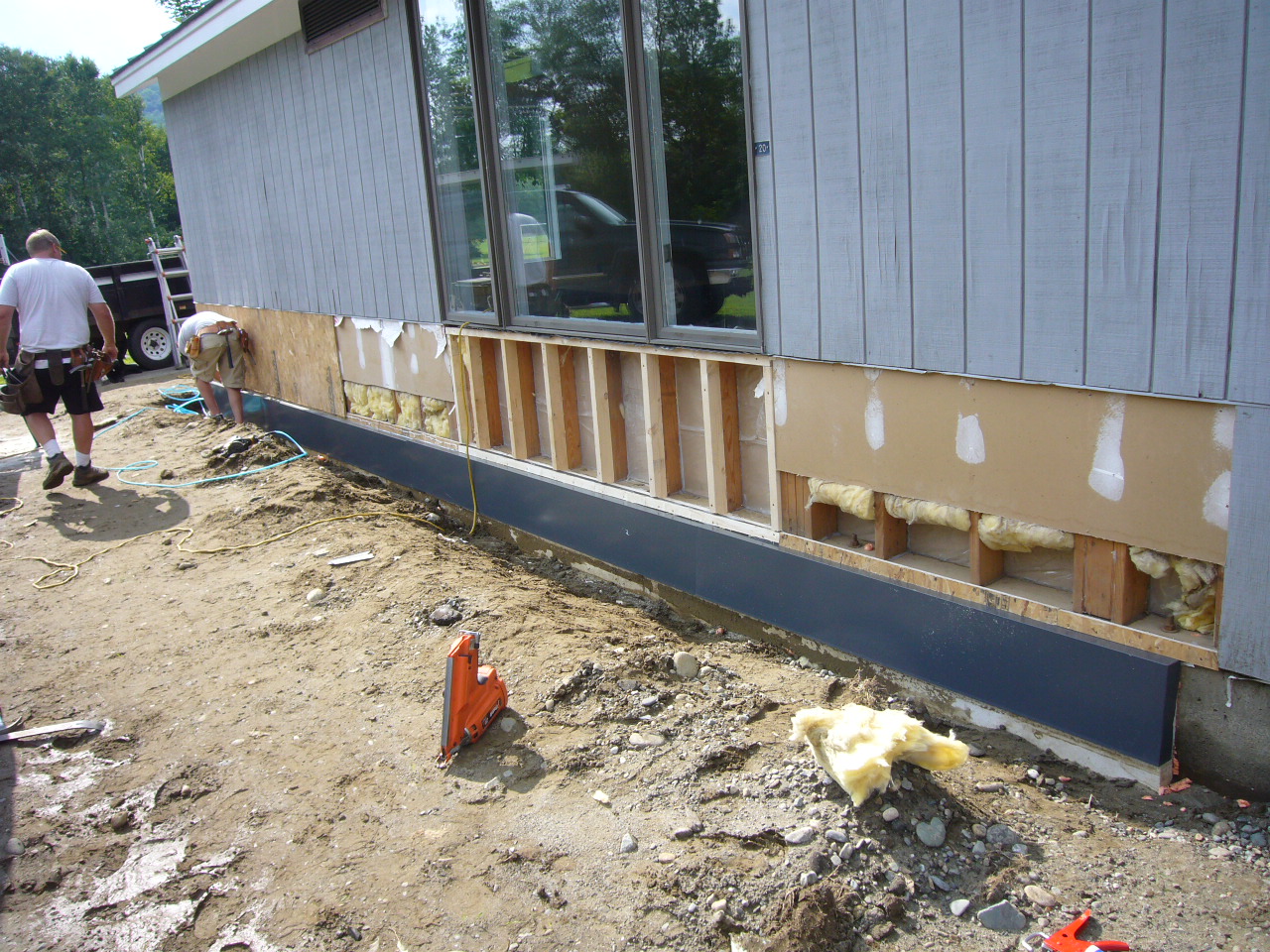 The perimeter of the foundation was dug out to a depth of two feet and three inches of Type IX expanded polystyrene (EPS) treated with a borate compound to increase insect pest resistance was added down the foundation wall and out horizontally two feet. The bottom two feet of the T-111 was stripped from the frame wall and replaced with new oriented strand board (OSB) and all joints were sealed with either caulk or peel-and-stick tape as appropriate to act as an air barrier. Then a layer of three inch thick polyisocyanurate foam insulation was installed, with a layer of three and a half inch thick Nudura EPS with integral wood nailers on top. Over that was a layer of housewrap and polypropylene drainage mesh, then local pine tongue and groove horizontal siding.
The perimeter of the foundation was dug out to a depth of two feet and three inches of Type IX expanded polystyrene (EPS) treated with a borate compound to increase insect pest resistance was added down the foundation wall and out horizontally two feet. The bottom two feet of the T-111 was stripped from the frame wall and replaced with new oriented strand board (OSB) and all joints were sealed with either caulk or peel-and-stick tape as appropriate to act as an air barrier. Then a layer of three inch thick polyisocyanurate foam insulation was installed, with a layer of three and a half inch thick Nudura EPS with integral wood nailers on top. Over that was a layer of housewrap and polypropylene drainage mesh, then local pine tongue and groove horizontal siding.
Window rough openings were extended with TimberStrand bucks fastened with long screws to the existing rough opening. New Serious Materials (now Alpen) 925 series windows were installed (Serious Windows donated the windows and provided shop drawings and technical support). These windows are made from hollow fiberglass pultrusions filled with polyurethane foam insulation. The glazing suspends two layers of Heat Mirror low-e film inside of two layers of clear glass, with krypton gas fill and warm edge spacers. The windows are a combination of fixed and operable sash, and have an overall insulating value of about R-6.
The air source heat pump installed is a Mitsubishi Hyperheat, which retains 75% of its rated capacity at -13˚F, and operates down to -30˚F. No back-up heat was installed. Minisplits are much less costly than ground source heat pumps, enabling us to shift mechanical costs to envelope costs, while providing a much simpler and more reliable system. The ERV we used was a Renewaire EV200. It recovers both sensible heat and moisture from the exhaust air and transfers them to the fresh air. I measured 85% effectiveness from this unit – on a morning that was -3˚F, the exhaust air was 70˚F and the incoming air was slightly above 59˚F. This worked without post-heating because we used a soft fabric duct with many small holes to distribute the air with rapid entrainment of room air to prevent drafts.
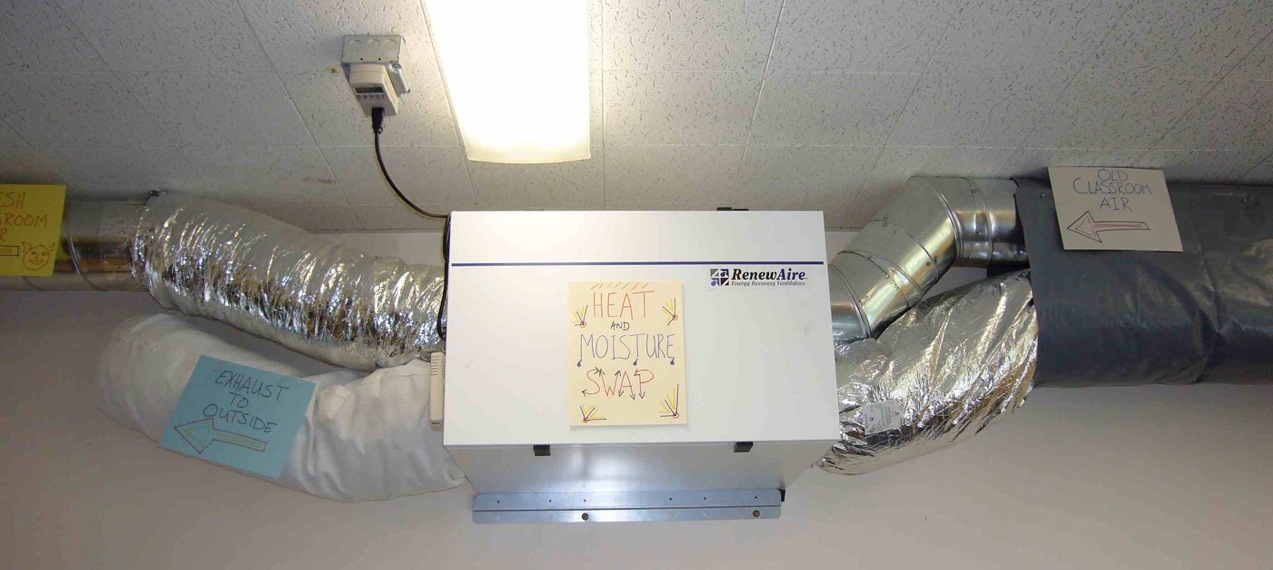
The classroom was equipped with energy meters to measure the energy used by the ventilation system and the heat pump, and Onset Computer Hobo data loggers to track classroom temperature and relative humidity, and also carbon dioxide (CO2) levels as a surrogate for indoor air quality. We also kept close contact with the room’s users. The differences both measured and experienced were profound. The room was dramatically more comfortable, quiet, and well ventilated than its counterparts. Relative humidity was in the comfort zone of 30-35%, much higher than the rest of the school. CO2 levels during occupancy were usually in the 1,000 – 1,200 ppm range. After-hours teacher meetings tended to gravitate to the Prototype Classroom because it was quiet and comfortable. We noted that even though the temperature was set back over the weekends that the prototype Classroom cooled much more slowly than other rooms.
The measured data showed that the heating cost per square foot for the Prototype was about 90% less than the rest of the school! From January 8th through June 18th, the heat pump used 347 kWh over a period consisting of 3,576 heating degree days, slightly below half of a typical heating season. The lights averaged 25-26 hours on per week, and the ERV averaged 33 run hours weekly. Total annual energy usage for heating, cooling, ventilation, lighting and plug loads was projected to be under $0.30 per square foot annually. It appeared that the Prototype could achieve Zero Net Energy – all energy used annually offset with on-site renewable energy - with a two kilowatt solar electric system. If we imagine extending these savings to the rest of the Plainfield School, it’s possible this school could achieve Zero Annual Net Energy with a 75 – 100 kilowatt solar electric system, costing perhaps $350 - 450,000. This seems like a big number, yet compare this to an annual energy cost of about $80,000 for the school – a number that no one believes is likely to go down in the future.
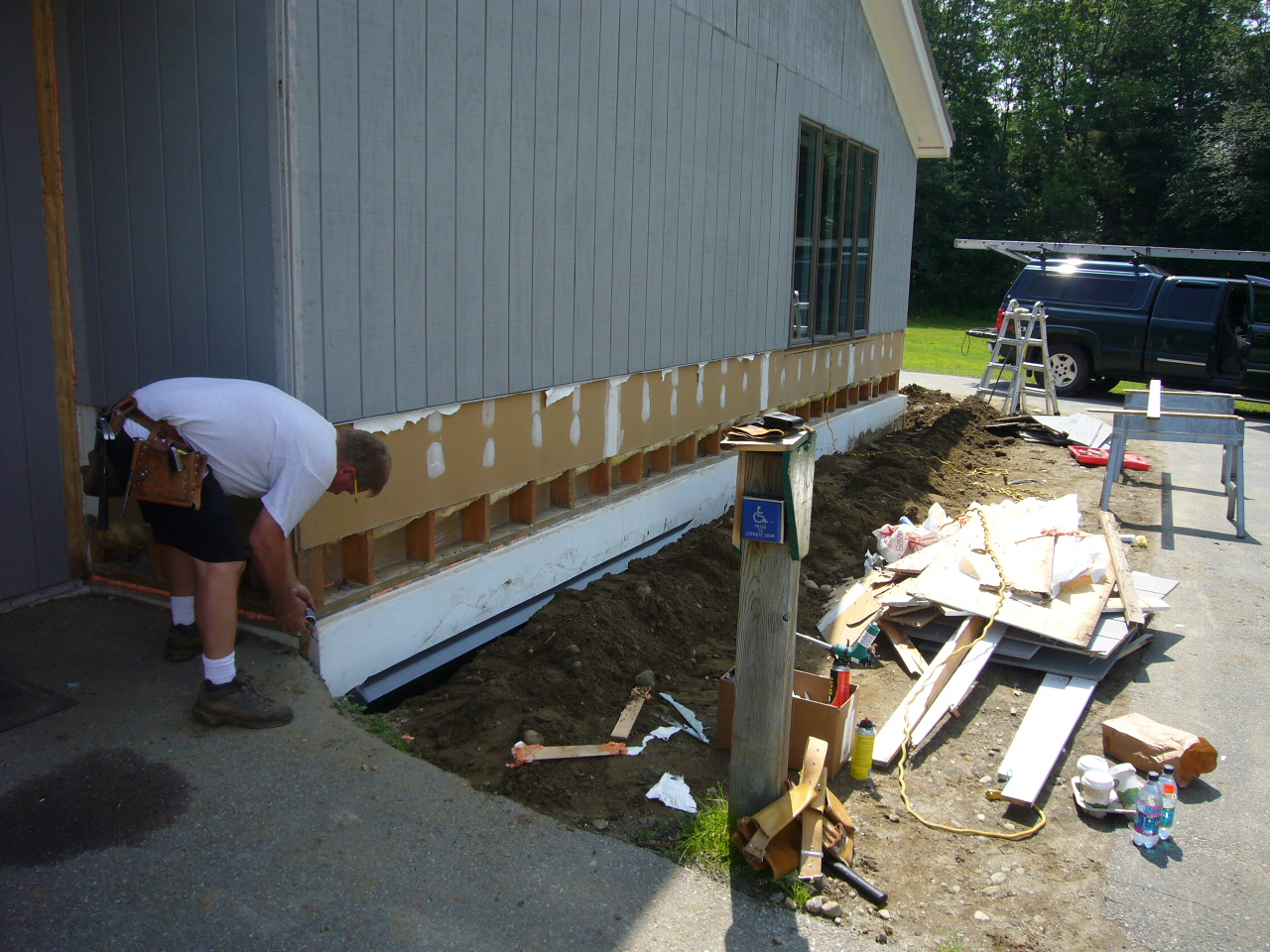 Based on the success of the Prototype Classroom, the Facilities Committee and the School Board went back to the voters in March of 2010 for a $275,000 bond to extend the Prototype Classroom approach to the balance of the 1989 building in summer of 2010, a total of about 8,000 square feet. The bond vote was passed with 77% voting in favor. This project included a portion of flat roof building, providing an opportunity to remedy an improperly pitched roof that had leaked water into the building for twenty years. Because of the previous reluctance to add insulation to the flat roofs, we included funds to have a structural engineer review the entire steel structure and recommend needed upgrades. Some beams required a certified welder to weld additional steel plate on the bottom, which we did in some instances. The portion of flat roof that was part of the 1989 wing upgrade received twelve inch thick stress skin panels with an EPS core (which provided an overhang for the added wall thickness below) and a tapered foam layer above to properly pitch the roof to drains.
Based on the success of the Prototype Classroom, the Facilities Committee and the School Board went back to the voters in March of 2010 for a $275,000 bond to extend the Prototype Classroom approach to the balance of the 1989 building in summer of 2010, a total of about 8,000 square feet. The bond vote was passed with 77% voting in favor. This project included a portion of flat roof building, providing an opportunity to remedy an improperly pitched roof that had leaked water into the building for twenty years. Because of the previous reluctance to add insulation to the flat roofs, we included funds to have a structural engineer review the entire steel structure and recommend needed upgrades. Some beams required a certified welder to weld additional steel plate on the bottom, which we did in some instances. The portion of flat roof that was part of the 1989 wing upgrade received twelve inch thick stress skin panels with an EPS core (which provided an overhang for the added wall thickness below) and a tapered foam layer above to properly pitch the roof to drains.
The mechanical system for the rest of the wing was a roof-mounted eight ton Mitsubishi Hyperheat with eleven indoor zones, plus a slightly larger ERV, the EV300, from Renewaire.
At this point in 2015 almost the entire school, save the Gym, has been superinsulated and retrofitted with heat pumps and ERVs. The oil boiler and underground oil tank are gone, and the Gym is being heated by modular propane boilers. Electrical usage has not increased with the switch to heat pumps, holding steady at about 160,000 kWh/year, along with 4,500 gallons of propane. It has a 100 rating from the EPA Energy Star program, up from 33 when we began.
 The example of the Plainfield School DER is garnering attention due to its radical energy savings, but focusing only on energy loses sight of the integrated solution that addressed energy, noise, air quality, moisture, durability, and comfort together. The approach used was accomplished in phases, as the Town can afford it. A key benefit is that Bill Knight, the Facilities Director, acted as the construction manager for the project and hired local builders and tradesmen to implement the work. This kept the spending local, while dispersing the skills and knowledge and enthusiasm to do more DERs in our community. The educational value for the students is immense, and the performance has become a source of pride in the Town. People’s understanding of what is possible has been greatly expanded. A community has come together to upgrade its school and secure its benefit to the Town for the future. We can do this all around the NESEA region, too, upgrading our existing buildings, and building new ones to meet similar high performance standards that ensure their long and beneficial service life to our community.
The example of the Plainfield School DER is garnering attention due to its radical energy savings, but focusing only on energy loses sight of the integrated solution that addressed energy, noise, air quality, moisture, durability, and comfort together. The approach used was accomplished in phases, as the Town can afford it. A key benefit is that Bill Knight, the Facilities Director, acted as the construction manager for the project and hired local builders and tradesmen to implement the work. This kept the spending local, while dispersing the skills and knowledge and enthusiasm to do more DERs in our community. The educational value for the students is immense, and the performance has become a source of pride in the Town. People’s understanding of what is possible has been greatly expanded. A community has come together to upgrade its school and secure its benefit to the Town for the future. We can do this all around the NESEA region, too, upgrading our existing buildings, and building new ones to meet similar high performance standards that ensure their long and beneficial service life to our community.
At this point we have numerous examples of both homes and non-residential buildings in which dramatic energy reductions as well as significantly improved comfort and air quality have been proven. There are commonalities about how we approach these projects, and the techniques and processes used are converging at the same time that new products and systems continue to appear. The Building Energy Master Series Deep Energy Retrofit online course pulls all this hard-won knowledge and experience together in one easy-to-understand, self-paced, interactive course. I hope you can join us!
